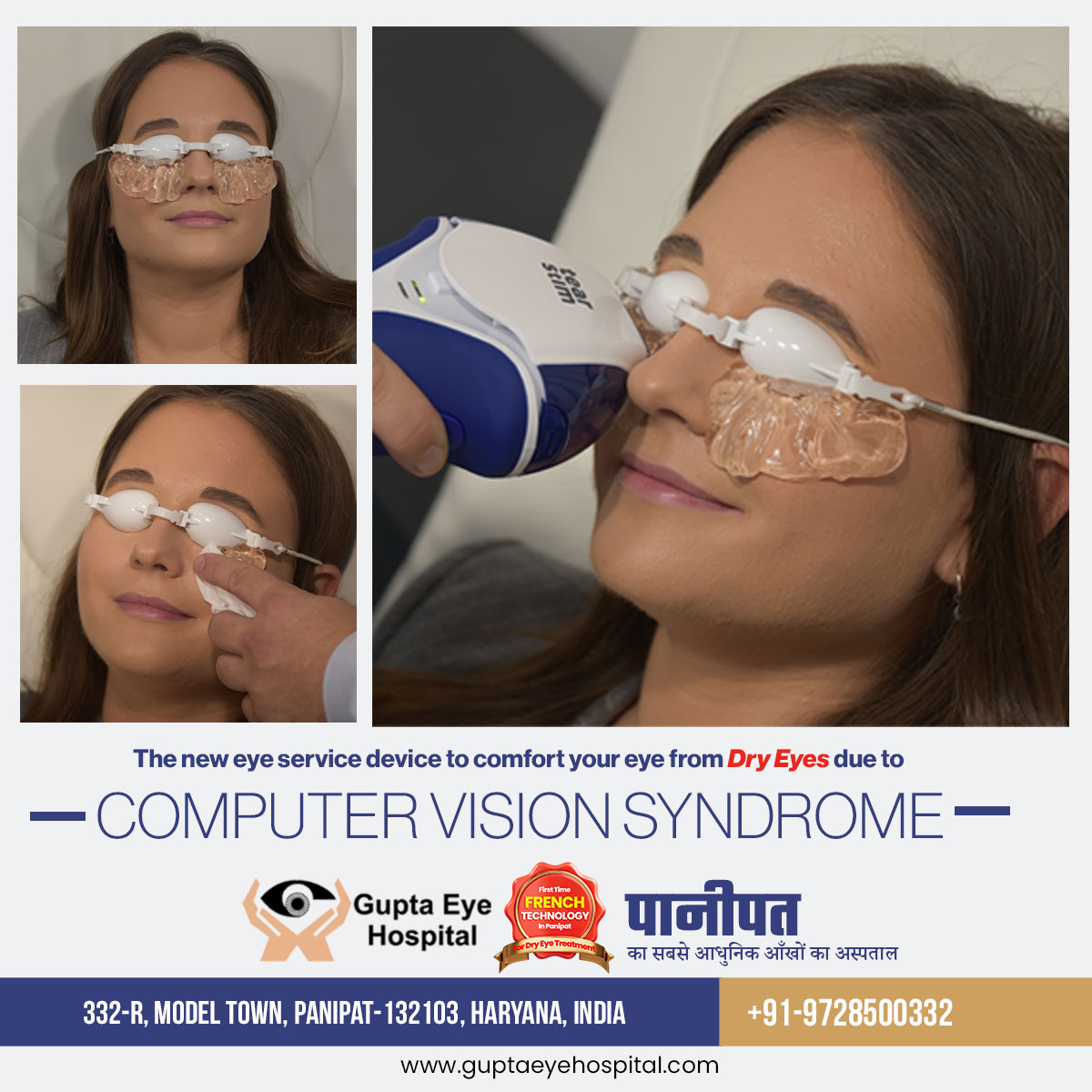Dry Eye Treatment In Panipat
Dry eye disease, also known as Dry Eye Syndrome or Keratoconjunctivitis Sicca, is a common eye condition that occurs when your eyes do not produce enough quality tears to keep the surface of the eye adequately lubricated. Tears are essential for maintaining the health of the front surface of the eye and for clear vision. When the tear production and composition are disrupted, it can lead to discomfort and various symptoms.
Dry eye is a condition that affects your tear film, the three layers of tears that cover and protect the surface of your eyes. You need a smooth and stable tear film to help you see clearly and comfortably. Disruptions to your tear film can cause uncomfortable symptoms like burning, itching, watering or blurred vision.
What is the Treatment?
Dry eye treatment by E-Eye
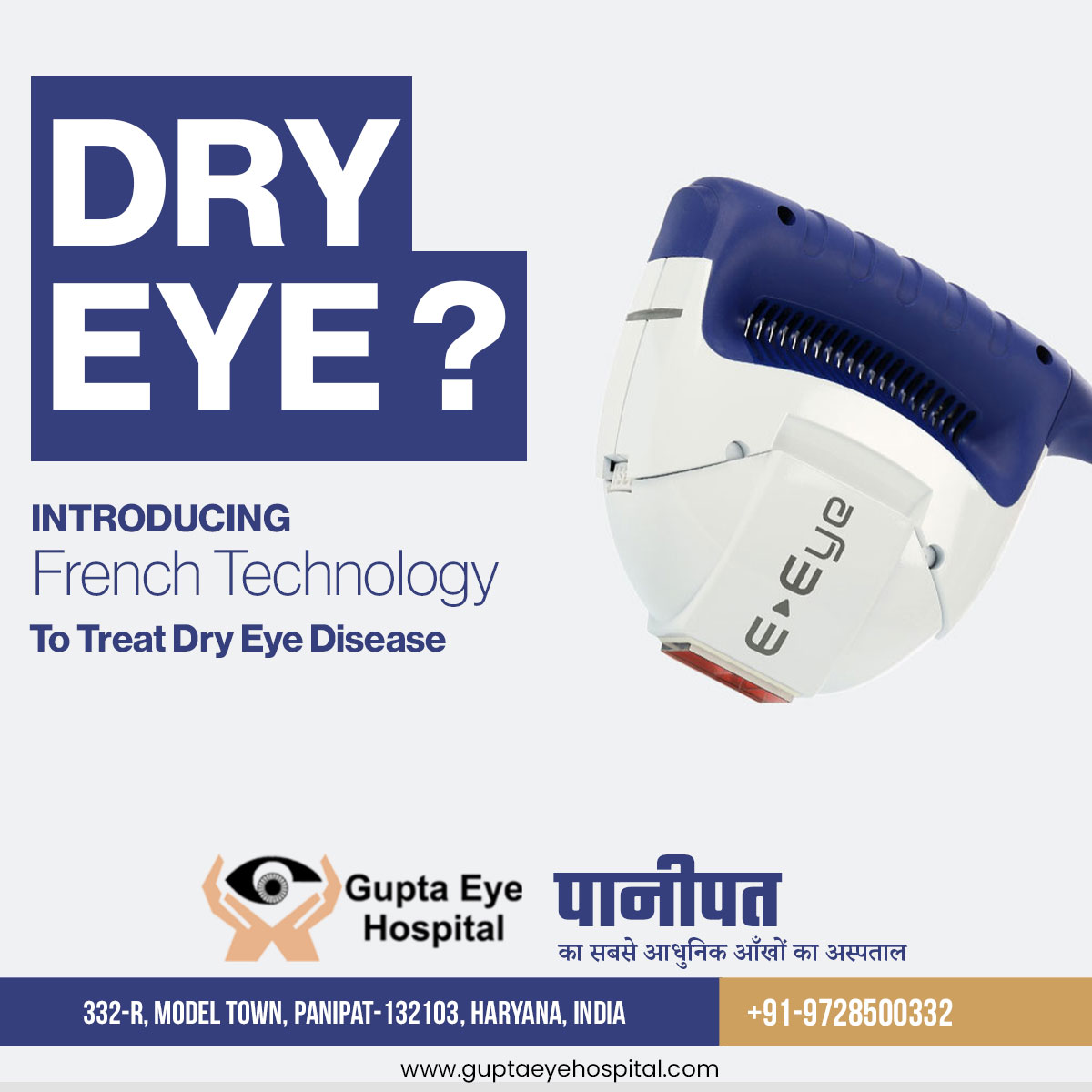
Types of dry eye disease
From its name alone, you might think dry eye disease simply means your eyes don’t produce enough tears. That’s actually only part of the story. There are several types of dry eye disease.
Aqueous deficient dry eye:
This is when your eyes don’t produce enough tears. Your lacrimal gland (in the upper, outer corner of each eye) produces your aqueous tears. These tears make up the middle, watery layer of your tear film. Some autoimmune conditions can cause inflammation in your lacrimal gland and prevent it from producing enough aqueous tears.Evaporative dry eye:
This is when your tears evaporate too quickly. The most common cause is meibomian gland dysfunction. This means the glands in your eyelids that produce the outer, oily layer of your tear film don’t work properly. As a result, the oily layer is unstable and can’t protect the watery layer from drying up.Mixed dry eye:
Some people have aqueous tear deficiency and tear instability. This means your eyes don’t produce enough tears, plus your tear film is unstable. Both of these problems lead to dry eye symptoms.
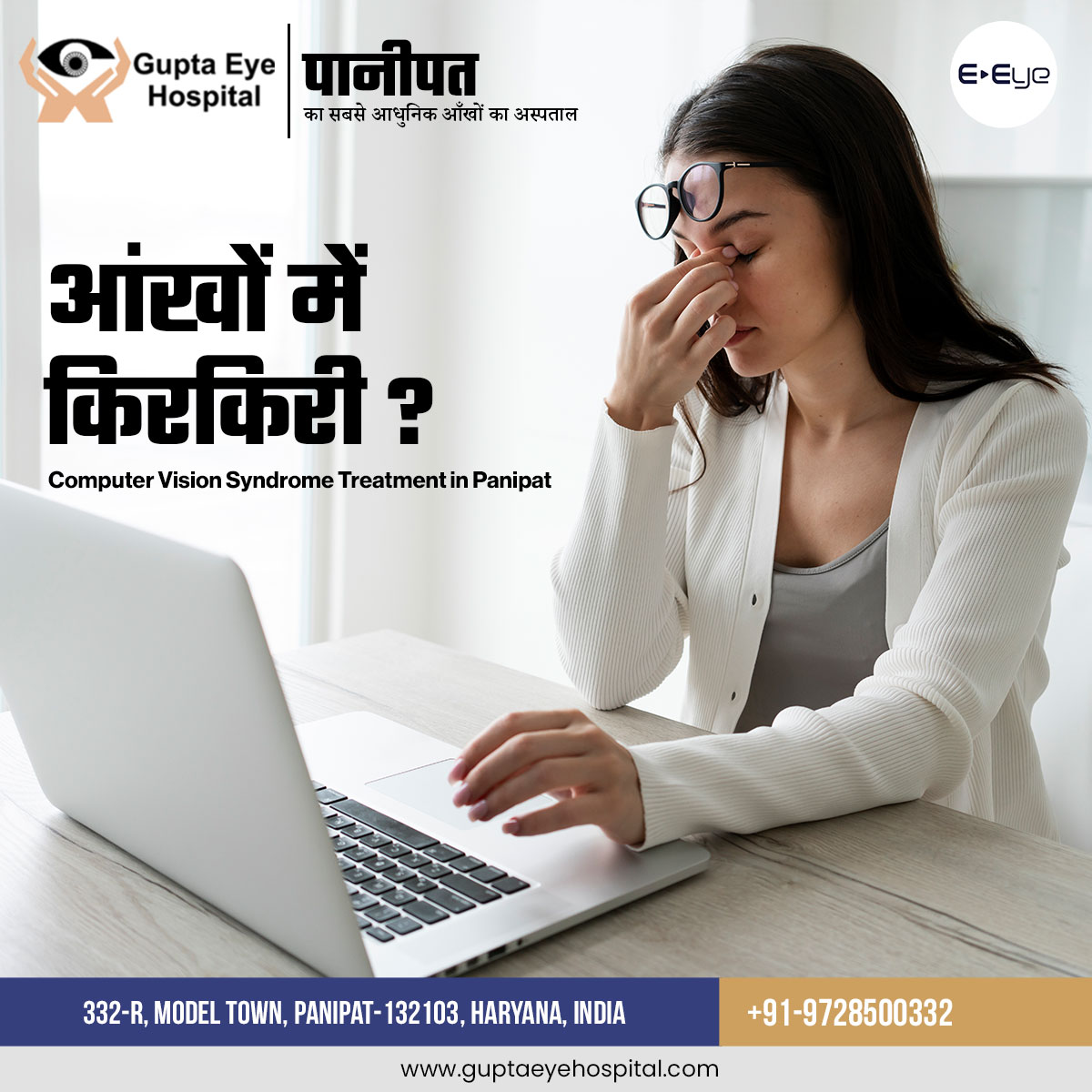
What are the symptoms of dry eye disease?
When you have dry eye, you might feel like there’s something in your eye that just won’t come out. This can feel like a scratchy, gritty or sandy sensation. Symptoms may also include:
- An itch, sting, or burning sensation.
- Feeling sensitive to light.
- Blurred or changed vision.
- Mucus that comes out of your eye.
- Watery eyes, with excess tears running down your cheeks.
- Reddened eye, A feeling that something is in your eyes.
The watery eyes symptom may seem confusing. But it’s a common aspect of dry eye. It happens when your meibomian glands aren’t making enough oils for the outer layer of your tear film. So, the middle, watery layer of your tear film evaporates too quickly. In response, your lacrimal glands try to make more watery tears to compensate. But these tears can’t properly coat your eye, as the oily layer would. So, they can’t solve the underlying problem.
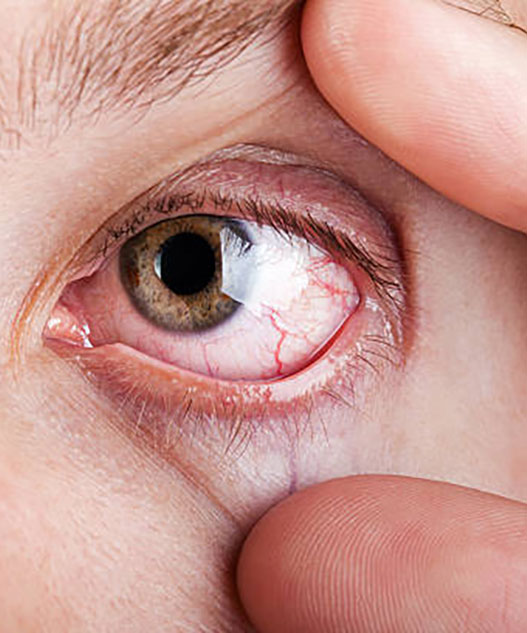
What causes Dry Eye?
Dry eye can be caused by a variety of factors, and often, it results from a combination of these factors. Some common causes and contributing factors to dry eye include:
- Aging: As people get older, tear production tends to decrease, which can lead to dry eye symptoms.
- Gender: Women are more likely to develop dry eye, especially during hormonal changes like pregnancy, menopause, or while using birth control pills.
- Environmental Factors: Exposure to dry, windy, or smoky conditions, as well as prolonged use of air conditioning or heating, can evaporate tears more quickly and lead to dry eyes.
- Blinking Abnormalities: Conditions or habits that reduce the frequency of blinking, such as excessive screen time or certain occupations (e.g., staring at a computer for long hours), can contribute to dry eye.
- Medications: Some medications, including antihistamines, decongestants, certain blood pressure medications, and antidepressants, can reduce tear production.
- Underlying Health Conditions: Certain medical conditions, such as Sjögren's syndrome, rheumatoid arthritis, lupus, diabetes, and thyroid disorders, can affect tear production and contribute to dry eye.
- Eyelid Problems: Conditions like eyelid inflammation (blepharitis), eyelid abnormalities, or incomplete closure of the eyelids during sleep (nocturnal lagophthalmos) can result in insufficient tear distribution and lead to dry eyes.
- Contact Lenses: Improperly fitted or overused contact lenses can cause dry eye symptoms, as can certain types of contact lens solutions.
- Refractive Eye Surgeries: LASIK and other refractive eye surgeries can temporarily disrupt tear production, causing dry eye symptoms that usually improve over time.
- Systemic Diseases: Diseases that affect the entire body, such as Parkinson's disease or vitamin A deficiency, can affect the quality and quantity of tears.
- Hormonal Changes: Hormonal fluctuations related to the menstrual cycle or pregnancy can influence tear production.
- Incomplete Blinking: Incomplete blinking while reading or using digital devices can lead to an uneven distribution of tears across the eye's surface.
- Allergies: Allergic reactions, such as seasonal allergies, can cause eye irritation and exacerbate dry eye symptoms.
It's important to note that the specific causes and severity of dry eye can vary from person to person. If you experience persistent dry eye symptoms, it's advisable to consult with an eye care professional for a thorough evaluation and appropriate treatment recommendations tailored to your individual circumstances.
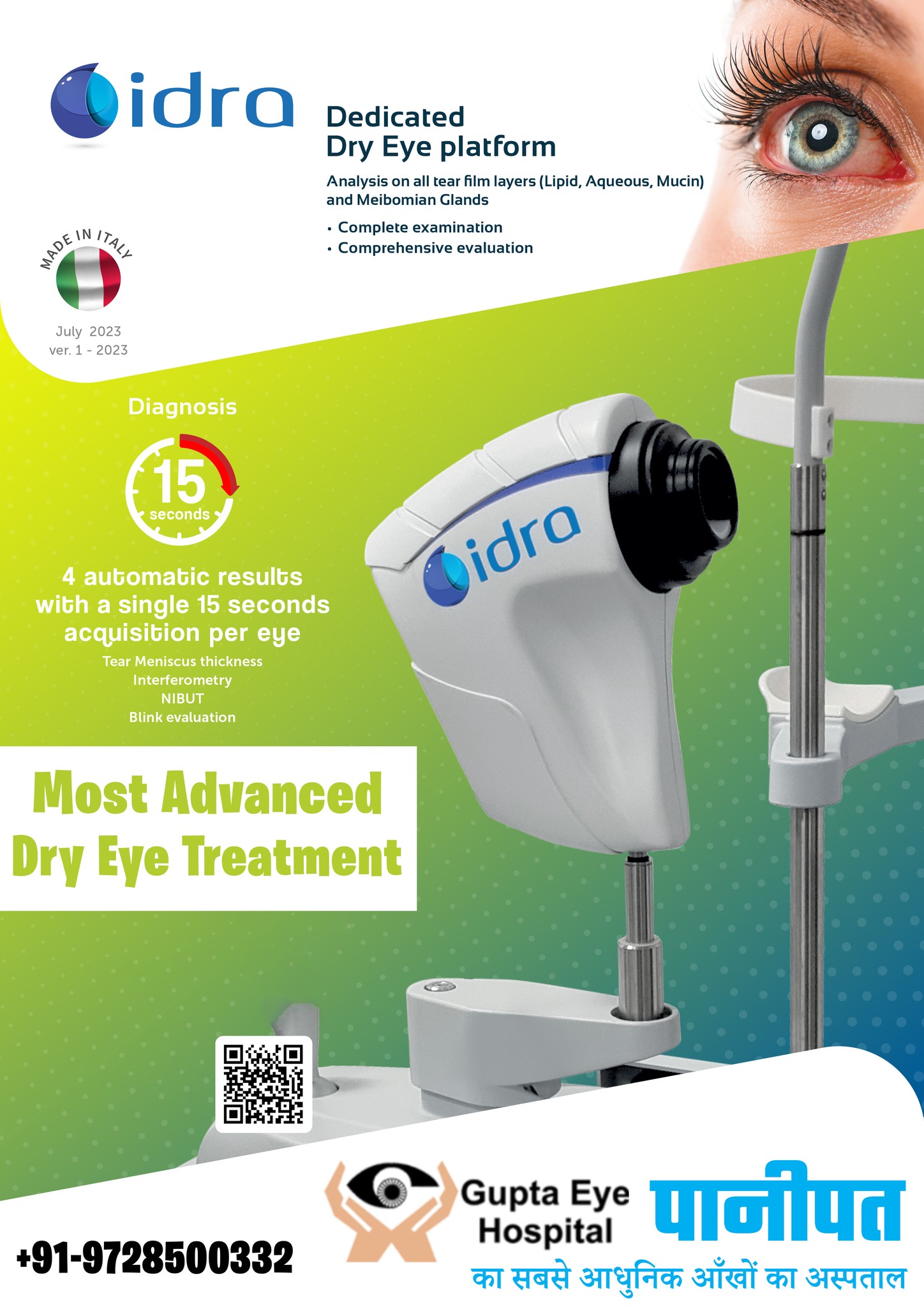
What is the treatment dry eye disease?
What new this French Technology bring to treat Dry Eye Disease?
Dry eye treatment by E-Eye (The Cutting Edge French Technology)
It has been proven in several neurological studies that the emission on a nerve of infrared as a train of pulses leads to the creation of a micro gradient of temperature between the inner and the outer layer of the myelin sheath.
This micro gradient of temperature triggers the liberation of neurotransmitters. Automatically, the parasympatic nerve is connected to the Meibomian glands by some of its branches. The neurotransmitters released will then be able to interact with the glands, stimulating the secretion and the contraction of the latter.
E-Eye does not directly affect the Meibomian glands. Its action is indirect. The “flashed” areas (buborbital and zygomatic region) are the areas where the parasympathetic nerve passes.
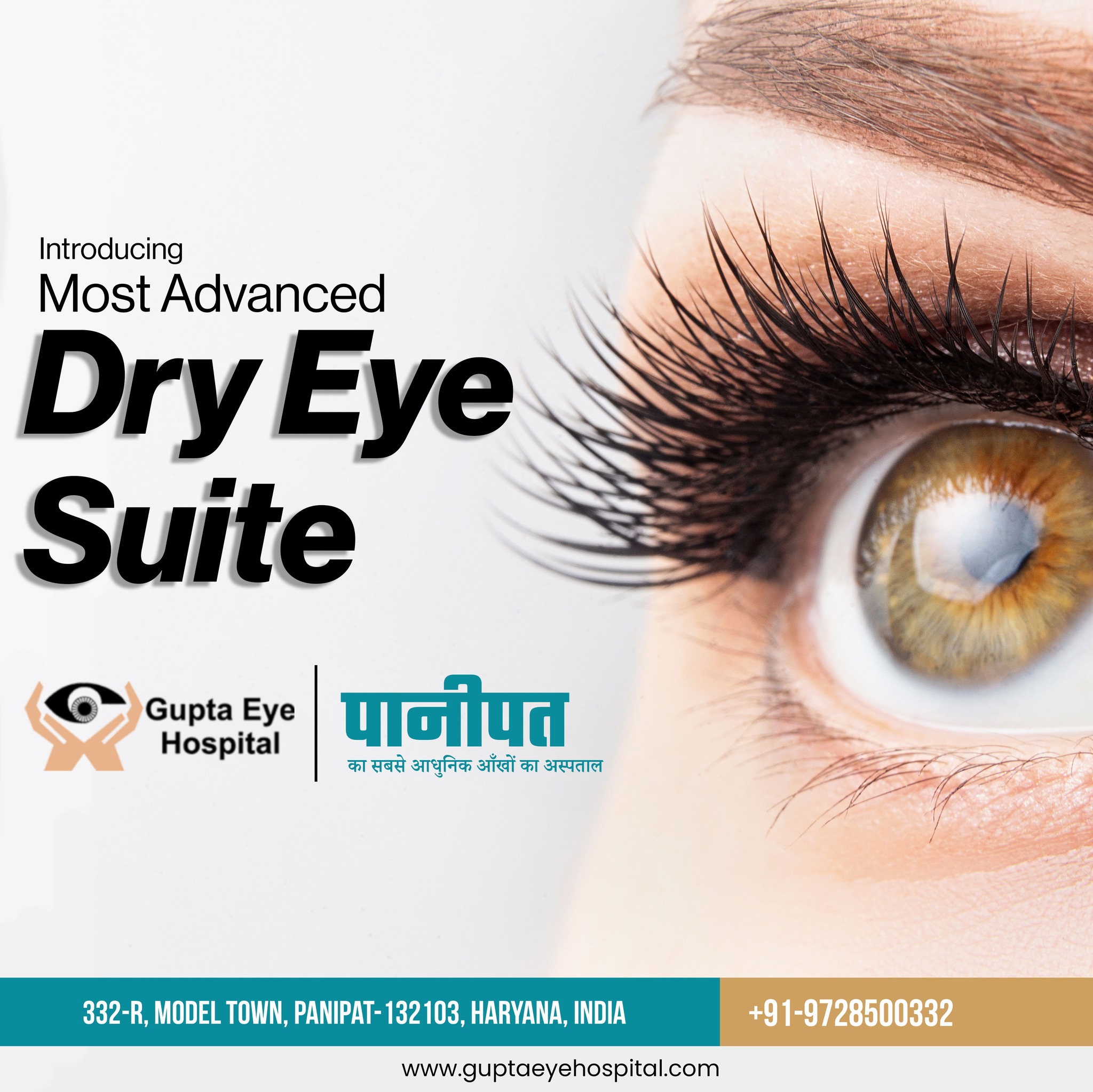
How it works?
The dry eye treatment with E-Eye only takes a few minutes, sitting in a comfortably chair. The eyes from the patient are covered by protective eyecups. Hydrogel is applied to the lower eyelid. A series of light pulses is performed around the lower eye, gentle and non-invasive. The series is repeated in the same way for both eyes. The treatment restores the normal activity of the Meibomian gland, with very rapid improvement for the patient from the very first session. The effect of first two treatments lasts a few days up to 2 to 3 weeks. The long-lasting effect is expected for minimum 6 months up to 3 years. The E-Eye protocol comprises three to four sessions. It is recommended to repeat one application once symptoms are coming back.
Results
As a result, the dry lipid layer receives a natural boost of lipids, which reduces the evaporation of tear fluid and prevents the eye from drying out. In addition, the quality of the glandular secretions is improved, and the tear film‘s lipid layer is stabilized.
